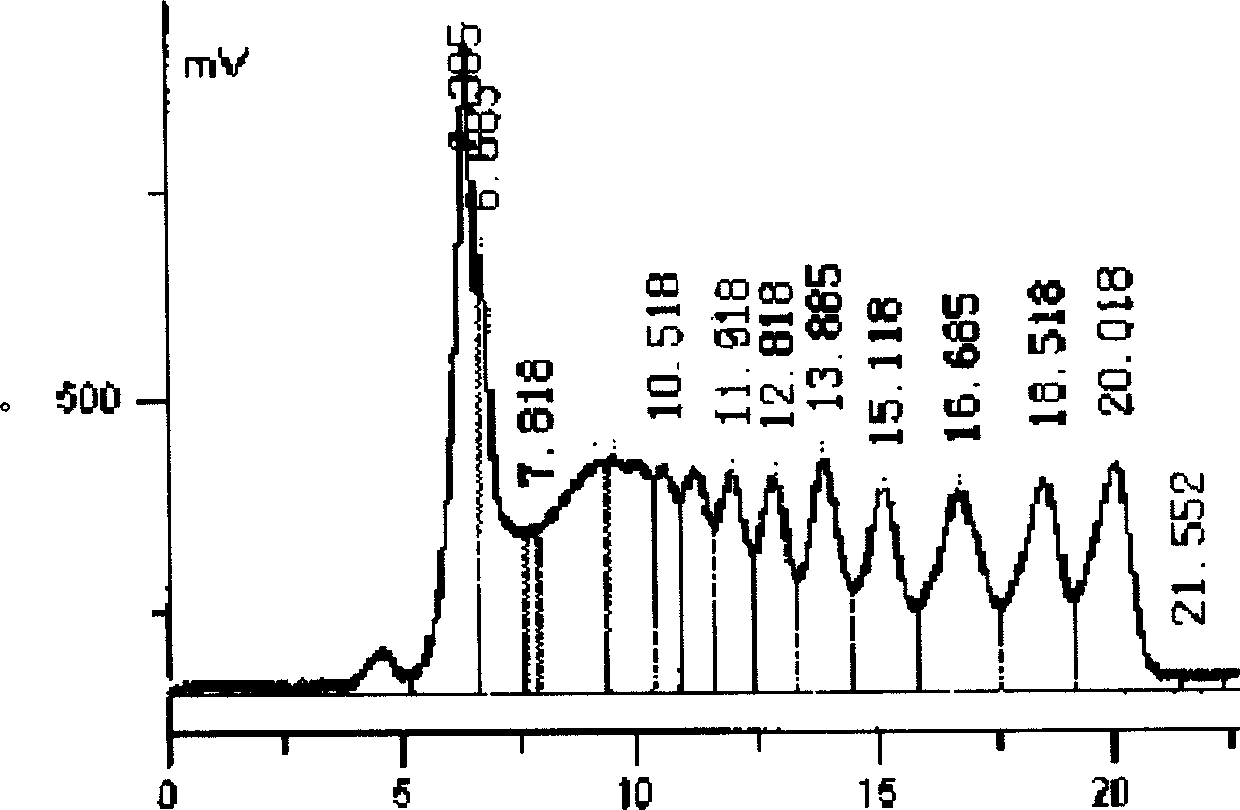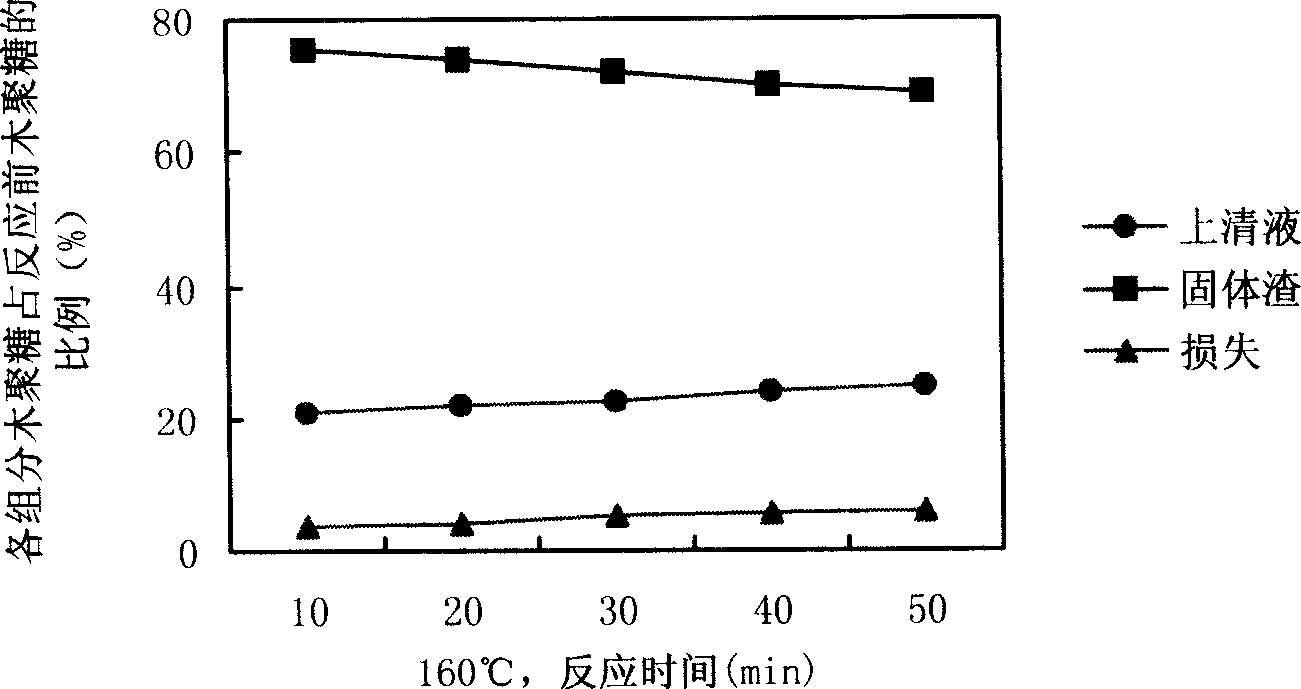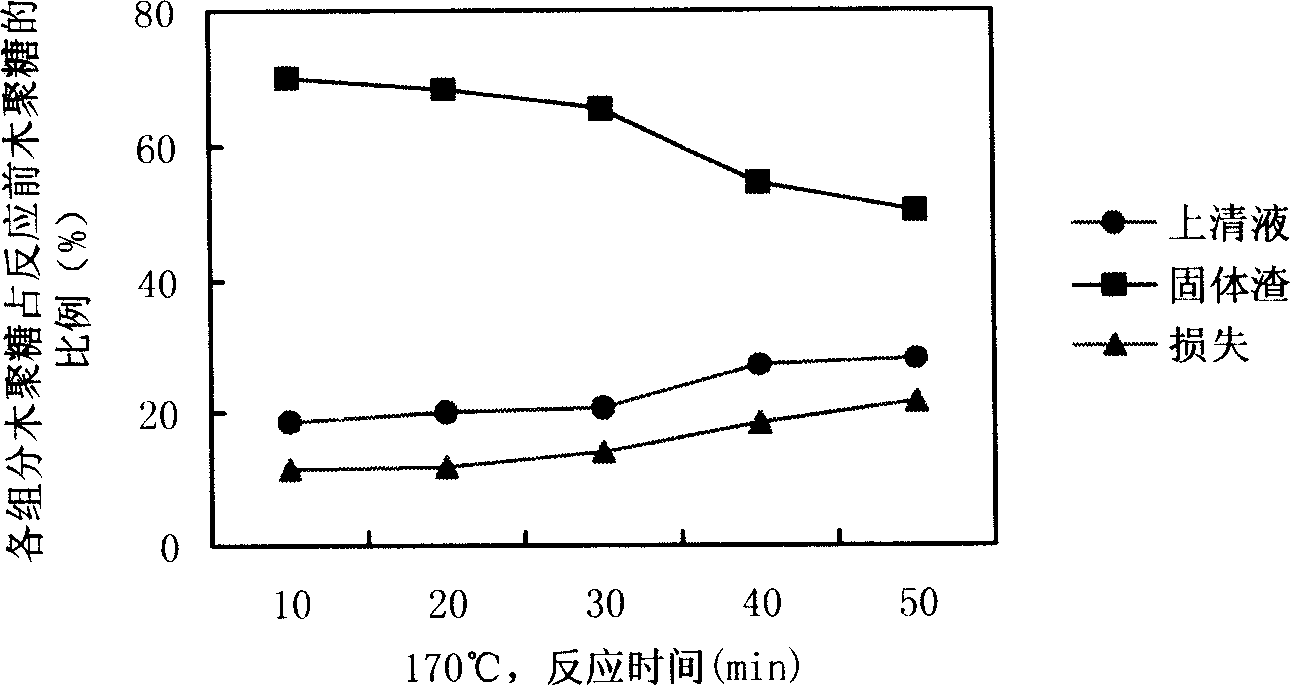Process for preparing xylo-oligosaccharide through high temperature degradation of xylan
A technology of high-temperature degradation and xylo-oligosaccharide, applied in oligosaccharide and other directions, can solve the problems such as patent technology that has not yet been seen
- Summary
- Abstract
- Description
- Claims
- Application Information
AI Technical Summary
Problems solved by technology
Method used
Image
Examples
Embodiment 1
[0017] Embodiment 1: the extraction of xylan
[0018] Crush 1000g of dry corncobs into particles with a particle size of about 0.5cm, add 400g of sodium hydroxide and 7000g of water, and cook at 85-90°C for 3 hours. Press filtration to separate cooking liquid and corncob solid residue. The cooking liquor was neutralized to pH 5.0 with sulfuric acid. The neutralized solution is desalted with a polysulfone hollow fiber ultrafiltration column with a molecular weight cut-off of 6000, and more than 95% of inorganic salts and low-molecular compounds can be removed with the ultrafiltration permeate, and xylan remains in the ultrafiltration mother liquor. Concentrate the ultrafiltration mother liquor with a vacuum evaporator so that the solid content of the concentrate is about 100 g / L. The analysis shows that among the 295.0 g of solids obtained from the above treatment of 1000 g of dry corncobs, xylan is 220.4 g, accounting for 74.7% of the solid; sodium sulfate is 18.8 g, account...
Embodiment 2
[0019] Embodiment 2: the high temperature degradation of xylan
[0020] Get the concentrated xylan solution obtained in Example 1, add water to dilute to contain xylan 5.85%, put it into a hydrolysis tank with a volume of 35ml, and seal it with a cover. The hydrolysis tank contains 2.05 g of xylan. Raise the temperature of the oil bath to 180°C, put it into the above-mentioned hydrolysis tank, and start timing when the temperature rises to 180°C again, so that the substances in the hydrolysis tank react at 180°C for 30 minutes. After the reaction is completed, immediately place the hydrolysis tank in cold water to cool down to terminate the reaction. Carefully open the hydrolysis tank, centrifuge the reaction solution, and collect the supernatant and solid residue respectively. The pH value, average degree of polymerization and total reducing sugars of the supernatant were measured, and the total reducing sugars were converted into xylooligosaccharides. Determine the total ...
Embodiment 3
[0030] Embodiment 3: the influence of different reaction temperature and reaction time on xylo-oligosaccharide yield
[0031] Adopt different temperature of reaction and reaction time, all the other conditions are with embodiment 2, can obtain attached Figure 2~4 The curves showing the influence of different reaction temperatures and reaction times on the yield of xylooligosaccharides.
[0032] attached by Figure 2~4 It can be seen that within 160-180°C, the higher the cooking temperature, the greater the ratio of xylan converted to xylo-oligosaccharides within the same holding time, and the greater the loss of xylan. Taking cooking for 50 minutes as an example, the conversion rates of xylan were 25.1%, 28.1% and 46.3%, and the losses of xylan were 6.0%, 21.6% and 34.2% at 160, 170 and 180°C, respectively. At the same cooking temperature, the conversion rate of xylan increased with the extension of holding time, and the loss of xylan also increased with the extension of ho...
PUM
| Property | Measurement | Unit |
|---|---|---|
| Particle size | aaaaa | aaaaa |
Abstract
Description
Claims
Application Information
 Login to View More
Login to View More - R&D
- Intellectual Property
- Life Sciences
- Materials
- Tech Scout
- Unparalleled Data Quality
- Higher Quality Content
- 60% Fewer Hallucinations
Browse by: Latest US Patents, China's latest patents, Technical Efficacy Thesaurus, Application Domain, Technology Topic, Popular Technical Reports.
© 2025 PatSnap. All rights reserved.Legal|Privacy policy|Modern Slavery Act Transparency Statement|Sitemap|About US| Contact US: help@patsnap.com



